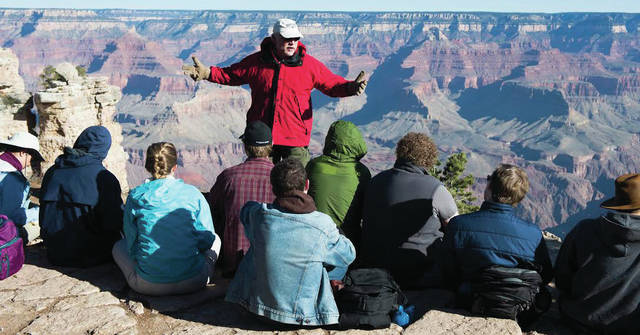
CEDARVILLE — Answers in Genesis director of research Dr. Andrew Snelling has been on a four-year quest to collect rock samples from the bottom of the Grand Canyon. When he finally visits the natural wonder to complete this task Aug. 6, Cedarville University geology professor Dr. John Whitmore will be along to help.
Snelling, a research geologist who earned his Ph.D. from the University of Sydney, submitted a request to collect the rocks four years ago. According to published reports, the National Park Service (NPS) asked other scientists to weigh in on his request. They critiqued Snelling’s young earth creationist views and said he lacked a credible scientific track record.
“He applied for the permit several times, and the National Park Service turned him down each time,” Whitmore said.
While Snelling is the primary researcher, Whitmore will serve as his assistant. They will retrieve samples from the Carbon Canyon area of the national park, and several other areas where folded rock layers of the Tapeats Sandstone can be found.
The rock samples will then be sent to a lab where thin sections will be prepared so Snelling can study the samples under a special microscope. According to Whitmore, researchers will study the rocks looking for minerals and other characteristics that would show whether the folds were made under extreme temperatures and pressures or whether they were made when the rocks were still soft. If the results indicate the folds were made when the rocks were soft, the findings would support the young earth position.
“That would be very exciting,” Whitmore said. “It would be one more line of evidence demonstrating that the rocks of the Grand Canyon are young and not old.”
Once the rocks are studied, results will be published in scientific literature.
In previous research, Snelling and Whitmore have discovered evidence that the Grand Canyon’s rock layers can be interpreted consistent with a Genesis account of creation and the flood that took place thousands of years ago, rather than millions of years ago.
Whitmore has worked in the Grand Canyon on other projects, including examining the origin of the Coconino Sandstone. He uses his field work and findings in the classroom at Cedarville. Every two years, geology students in the sedimentology and stratigraphy class visit the rim of the Grand Canyon to study its rocks firsthand.
As word about the NPS decision was released July 6, Whitmore and Snelling were preparing for their yearly Christian Leaders Trip offered through Canyon Ministries and Answers in Genesis. The two geologists, along with two Bible professors, raft through the Grand Canyon with other professors, college presidents, and higher education officials and explain the formations from the perspective of Noah’s flood and the Genesis account of creation.


